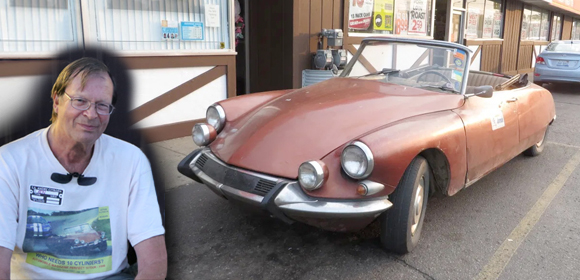We’ve had lots of interest about Ken Nelson’s DS Chapron cabriolet and how he has made it to be, as he claims; ‘the most robust DS cabrio in existence’. While it is not going to win any contest for pristine looks, what Ken has done underneath to keep this car on the road as his “driver” is quite remarkable.
Here’s how Ken describes his efforts — in his own words:
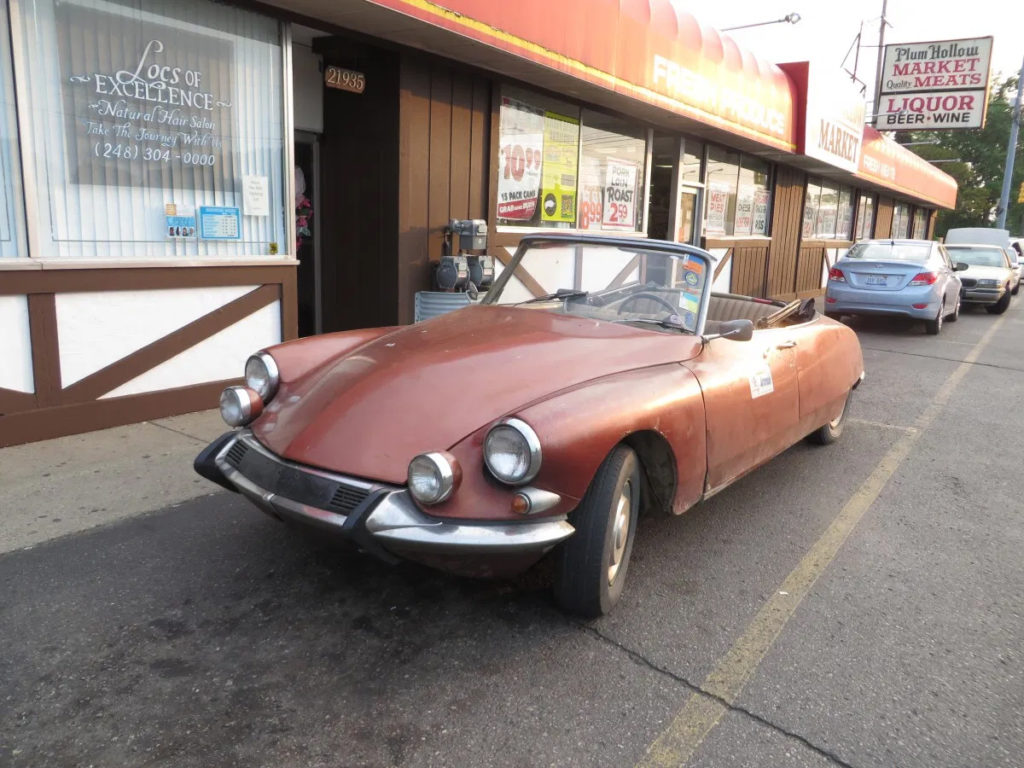
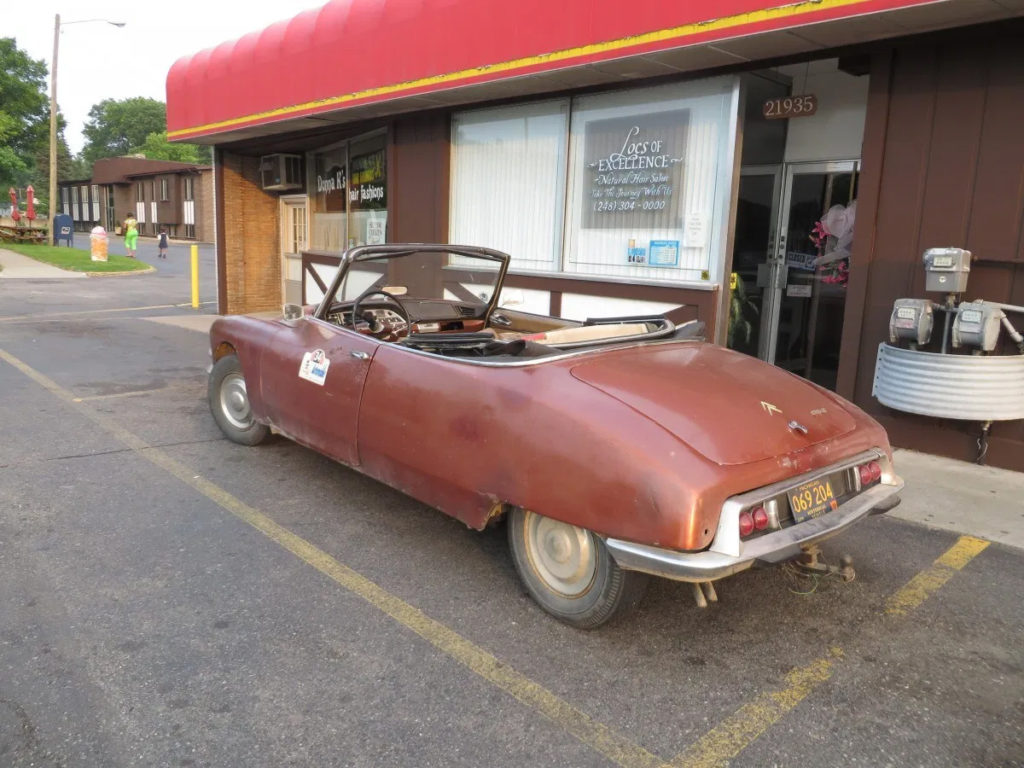
I got involved with this car in 1982, when two Citroën friends who knew me as twice President of the Chicago Citroën Club, and came to me with this car in horrendous condition, breaking in half, engine frozen. I hoped I could restore it for them, as I had repaired another convertible in the Detroit area before that and have been driving Citroëns and maintaining them myself continuously since 1962.
Long story short, when I started a deep dive into this wreck, I couldn’t believe how it had been butchered by a so-called professional restoration shop somewhere around Chicago.
The idiots who worked on it had no clue about structural engineering of a monocoque chassis, as shown by their trying to weld a 3/8 in. thick bar of steel to the bottom of the chassis sill boxes, then sandblasting the underside of the rear body, and covering the swiss cheese structure under the body shell with up to a 1/2 inch of fiberglass.
As I got further into the car, I practically sat down and cried over the abominable mess the last shop had made of the car. There was so little left of the platform structure that I had very little hope of ever being able to put this car back together.
I sent the two friends in Chicago a videotape of how bad it was, and said I didn’t know if anyone could restore this without a huge, very well equipped shop — and the price would be enormous. As I had a full-time job and family at the time, I offered to buy them out as I didn’t see how I could even begin to put it back together. After seeing the video, they agreed and I reimbursed them and then some.
At that point, as I had nothing to lose, I completed removal of the rear turtle deck, which with the doors and windshield frame are all that really comprise the cabrios. I mounted the turtle deck vertically on my garage floor, using an overhead gantry I designed & built which was strong enough to pick up the whole car.
The bare chassis was in pieces, rusted thru about 50% all over. Having dealt with a lot of rusty DSs prior to this car, I knew exactly how bad the damage was, and that Chapron had never fixed a very significant design weakness in the DS chassis from day one. From 1982 to 1989, I worked part-time on the car, mainly over Christmas holidays when the family went south to the grandparents. I cut rusted metal out of the turtle deck support structure, searched for and found a pristine California car stripped chassis in the hands of a close friend, Rod Burwell in New Haven, CT.
I bought the bodiless chassis with a dead engine still in it, towed it back to Detroit behind my ID sedan, powering the dead car’s suspension with a line from my tow Cit.
To guide me in the restoration, I had an extremely rare copy of Javel magazine documenting Chapron’s shop and his build method, which I followed and duplicated. However, I went him one better: The closed box sills of the DS end right under the front hinge pillar, and the box becomes a distorted C section. Right there the sedans and consequently wagons and the cabrios all have a flexure point which leads to lots of cowl/dash shake when the roof is removed. I have photos of how the car’s structure was stitch-welded together at the factory, so I knew exactly what I had to do to make this cabrio the strongest in the world, and it is now still the strongest unless someone else has done what I did.
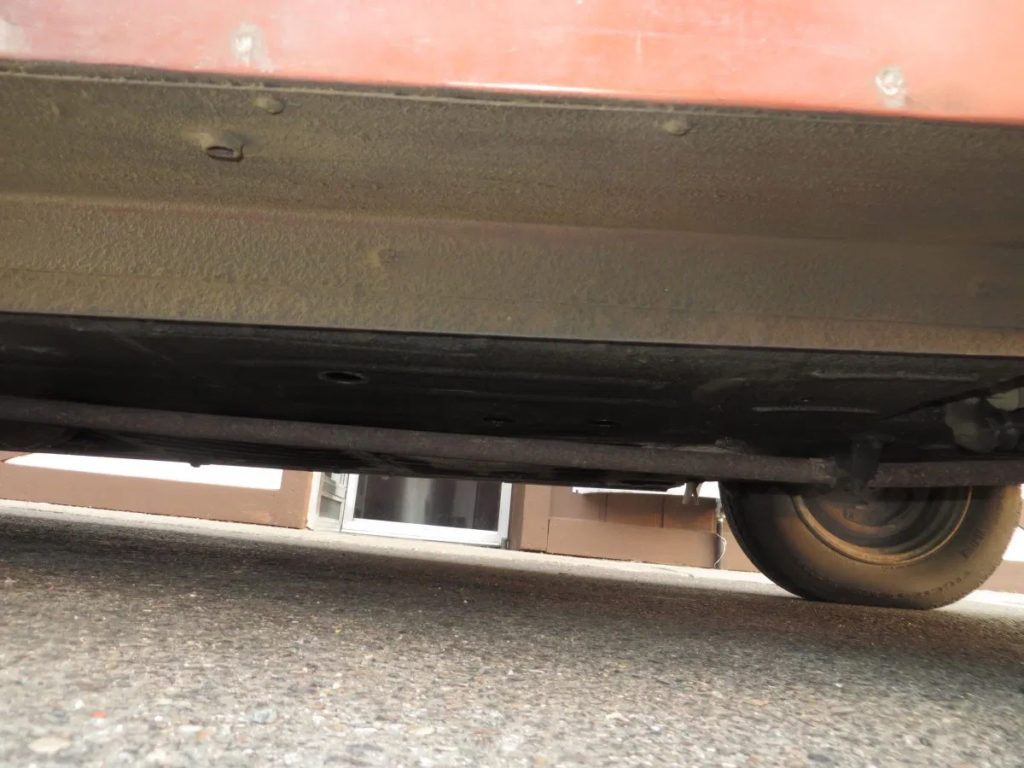
Not even an expert on these cars can tell that I sandwiched an 18 gauge, two-sided galvanized steel angle plate from the very rear of the sill box, thru the C section under the hinge pillar, and continued it to the firewall, making the sill a true BOX section instead of a poor second cousin. Mig-welded throughout, with doubled up cross braces inside the box extension, there is no other DS cabrio in the world which is as tough as this one.
The critical part of the windshield frame I had to make out of two pieces of hand-hammered chrome-moly steel to duplicate what Chapron did to strengthen the A pillars.
All in all, I handmade about 41 pieces of steel to rebuild the car to better than Chapron’s standard.
It took 1200 hours over 7 years to put this car on the road, with the same paint & top it had when I first got it. I was so tired after all that work, that I have done virtually nothing to improve the body since I began driving the car 25 years ago. It is my daily driver in decent weather, but never in the winter.
And notice how clean the bottom of the sills look vs the door bottoms & rest of body – that’s because of that galvanized plate I built.
I tow cars on my dolly with this car and don’t apologize for that – I drive the hell out of it and on a 5 week road trip on the Raid America Northwest summer of ’94 my son Karl and I drove this car from Detroit to Vancouver, joined up with 26 2CV “Ducks”, drove 3500 miles over 3 weeks through the Pacific Northwest, camping all the way, did 7% mountain grades, Glacier and Yellowstone National Parks, on to San Francisco. We then headed home from the north end of Death Valley in August starting at Crankshaft Junction, south over 40 miles of rough gravel road at 60 mph to arrive in Furnace Creek where it was 118° F in the shade. The car never overheated, but I had to wear gloves to hold the steering wheel. Then home passing through Four Corners Monument at 90 mph (Karl’s a lead-foot) and traveling all night to arrive in very good time with about 8,000 miles on the clock – with never a breakdown.

There’s a good story as well about that door decal. It cost me $3,000 to participate in the 3 day Perfect 10 road tour put on by David E. Davis of Automobile Mag and Bob Lutz, then President of Chrysler. I paid it as a Father’s Day gift for my Dad, who’d just nearly died from heart failure months before the tour, as Dad had gotten me started on Cits back in ’62 when he brought home a ’58 DS19 from a Studebaker dealer for $260 with 22k miles on the clock. We cut our teeth on it. Fortunately the Mayo Clinic saved Dad with an experimental pacemaker and he was a new man in time for the rally. He was tickled pink when we had dinner with Bob Lutz one night.
Now, 25 years later, the top still fits perfectly, the doors shut as well as they ever did, and a Citroën engineer who visited me around 1995 mentioned as we drove over several sets of railroad tracks – “your dash doesn’t shake”. Right!
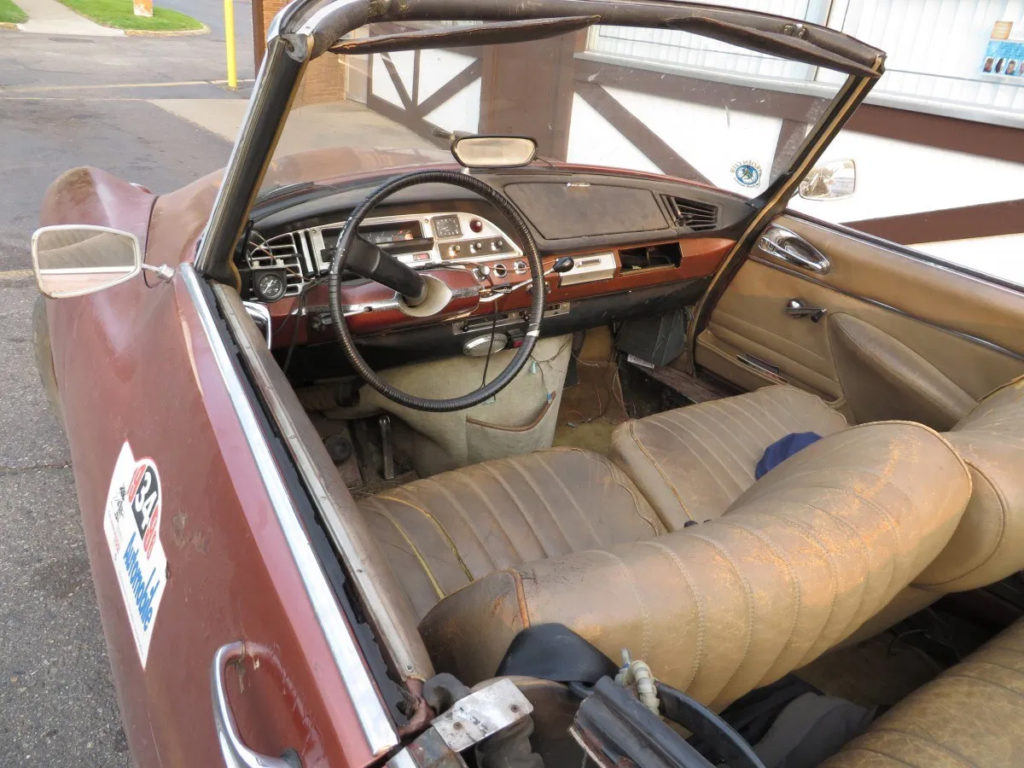
One good thing about not having had the money to pay for new paint & upholstery is a whole lot more of the public gets to see the car and it’s great fun having people come out of the woodwork who used to have a Cit or just want to learn about what I believe to be the single most innovative product in the automotive industry since the Ford assembly line. I try to convince people these cars aren’t as complicated as they first appear – it’s just got a lot of basic plumbing, and if you can fix a sink, with a little thought these can be fixed just as easily.
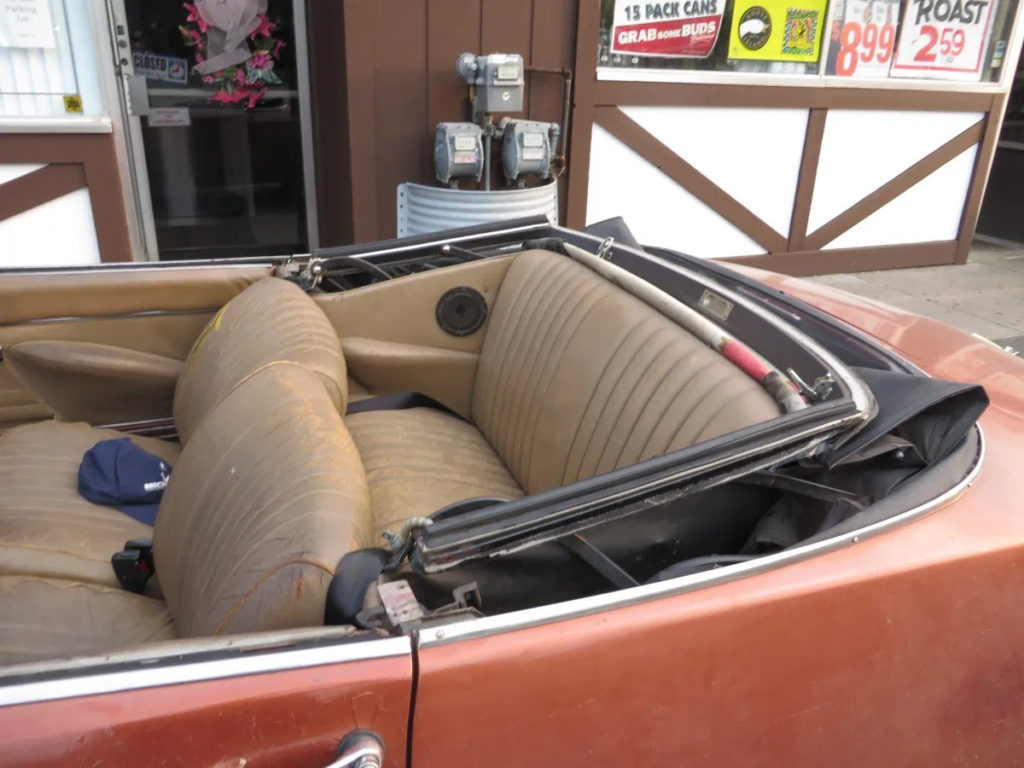
If I had sunk my life’s savings in a $10K paint job and another $5k in upholstery, I doubt I’d have it out of the garage every other day when it’s not raining. It may look like hell, but it runs like a train, and a real advantage is I know every nut & bolt & cranny, so I feel confident driving it anywhere – it talks to me.
My background is in simple physics, and as I went thru the courses I was constantly realizing how thoroughly the designers thought out what a vehicle has to deal with, and how they threw away the book and rethought the whole concept of a car. Can anyone name another car where every suspension arm is mounted, not in rubber bushings, but tapered roller-bearings?? All the engineering manages to minimize stress on major parts to reduce long term wear, and the durability of wheel-bearings, steering components and others is way beyond most cars. In my 52 years of DS ownership, I’ve only had two front wheel-bearings get noisy, and in all the cars I’ve been thru have never had one outright fail. I have never replaced a front driveshaft due to wear. How many FWD cars can claim that?
Many of the parts are way over-engineered but you never see them as they’re hidden and never cause trouble. Unless you’ve taken one of these cars apart, it’s hard to understand the fact that in 1957, GM execs disassembled one and cost-analyzed a ’57 DS. Conclusion? — It would cost GM $10,000 in ’57 money just to duplicate the engineering in this car. I got that first-hand from one of the GM execs who bought the car (I was a consultant in engineering plastics development applications to the auto guys for 30 years through my work for Dupont).
As an example of the DS influence, the Pontiac Fiero was built like a DS – the entire unibody was driveable without a single body-panel on it, and like the DS, the Fiero chassis was MACHINED where the plastic body-panels mounted to the chassis since the dimensions of the plastic panel were more precise than stampings. The Pontiac mill/drill machine tended to bore holes thru the fender shotguns when the chassis stampings got out of tolerance or were mis-welded!
I’ll drive my DS cabrio anywhere, anytime. It especially likes to run about 90 mph – all day. And as I used a ’70 Pallas chassis, it’s a green fluid car. The purists can complain, but this car incorporates everything I’ve learned over 50 yrs of driving & maintaining these cars. No owner of a perfectly restored or original DS cabrio has had as much fun with his car as I have with mine. As I said, it’s my daily driver, and no one’s got enough money to buy it from me.
